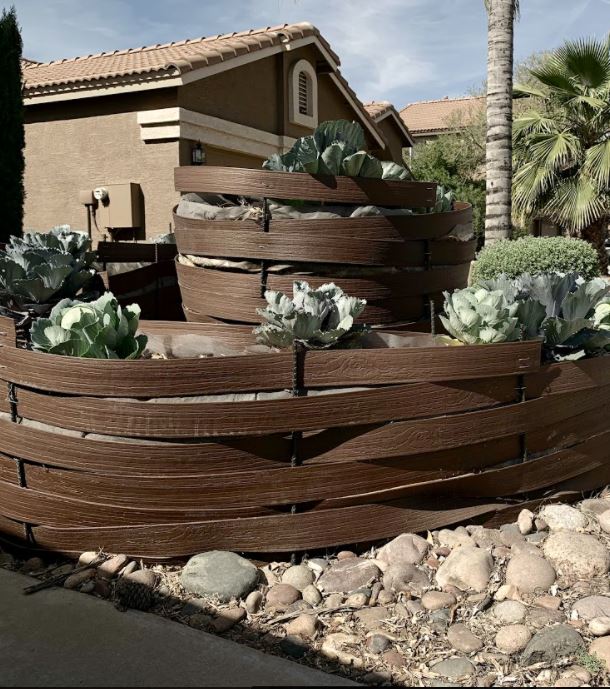Elevate Your Garden Skills With Raised Garden Beds

Elevate Your Garden Skills With Raised Garden Beds
*By Cindy Dixon
Want to elevate your garden skills? Try raised garden beds! There are many reasons to grow in raised beds. First, and foremost, you can create and control your soil. Many people live in areas where the native soil does not enhance or encourage the growth of edible crops. A raised bed allows you to create your own rich organic soil, just the type your fruits and vegetables will thrive in. Working in your ‘designed’ soil is easier due to the fact the soil is new and not compacted. You won’t have to worry about taking out unwanted rocks, weeds, or any other undesirable items that appear in native soil.
Less soil erosion occurs due to the fact the soil generally stays within the garden bed.
It’s also easier to monitor your water usage in your raised bed. The healthy organic soil you added tends to hold water while releasing it, as needed, to plant roots more readily than native soils. These garden beds tend to have better drainage; thus, adding another benefit to raised beds.
Secondly, raised beds are generally easier to work in since you have minimized or eliminated the bending over or kneeling aspect of gardening. If you want to add a ledge to your raised bed, you will be able to sit while gardening. Imagine that! No more aches in pains after working in the garden.
You can also add your creative flair to your raised garden bed. There are many raised garden bed designs, from the traditional wood/block box to a spiral design to a hugelkultur or anything in between. Many of these designs (I.e. garden spirals/hügelkultur beds) help to increase your growing space in a relatively small area. Let your imagination and creativity go wild. Some Agriscaping landscapes have designed raised beds with benches so a table can be placed between the beds, establishing a space to eat out in your garden.
Consider the dimensions of your garden bed when planning a raised garden bed.
The width of your raised bed should be no more than ½ of your height. Customarily, a person’s reach is approximately ½ of your height. You want to be able to reach across your garden bed without stepping in the bed, which leads to soil compaction. A general rule of thumb is to build a raised garden bed no wider than 3’ to accommodate all that might work in your garden bed.
When thinking about the depth of your raised garden bed, consider the roots of what you’ll be growing throughout the seasons. Lettuces typically are shallow-rooted plants; however, carrots can grow up to 12” long. Agriscaping advocates crop rotation between growing seasons, so think about those crops with the longest roots and build your bed accordingly. It’s recommended to build your bed at least 18” high to accommodate most plant roots you’ll be growing! There is a caveat to designing deeper/higher-raised beds; you will be spending more money initially to fill your bed with rich, organic soil.
Lastly, this method can give you a taste of gardening by building a small, raised bed. Test it out, see what you think, you might just find out that gardening in raised garden beds is an uplifting experience!
To find out what webinars or live classes are available for free click here!
* You can find out more about Cindy Dixon at lasvegas.agriscaping.com .

